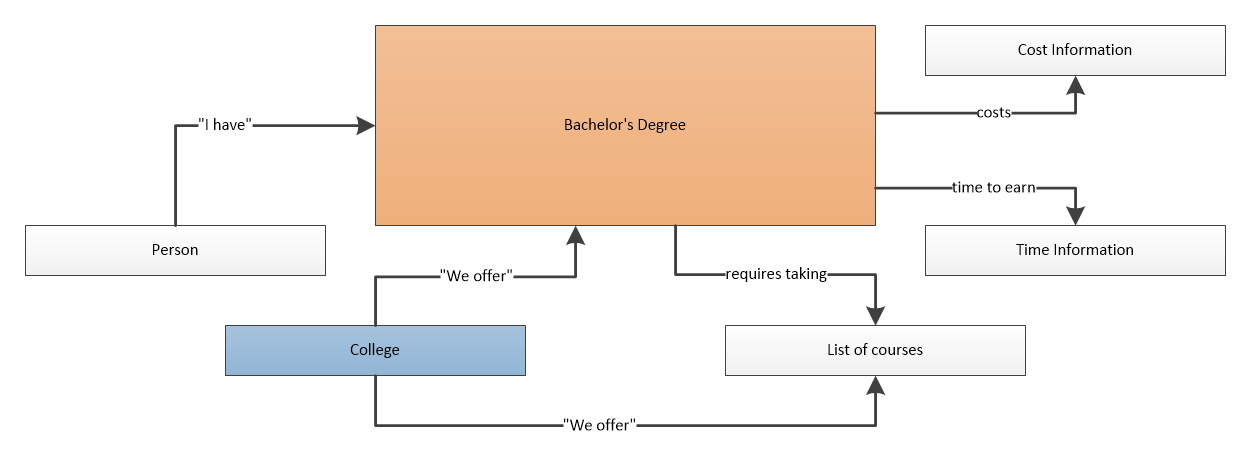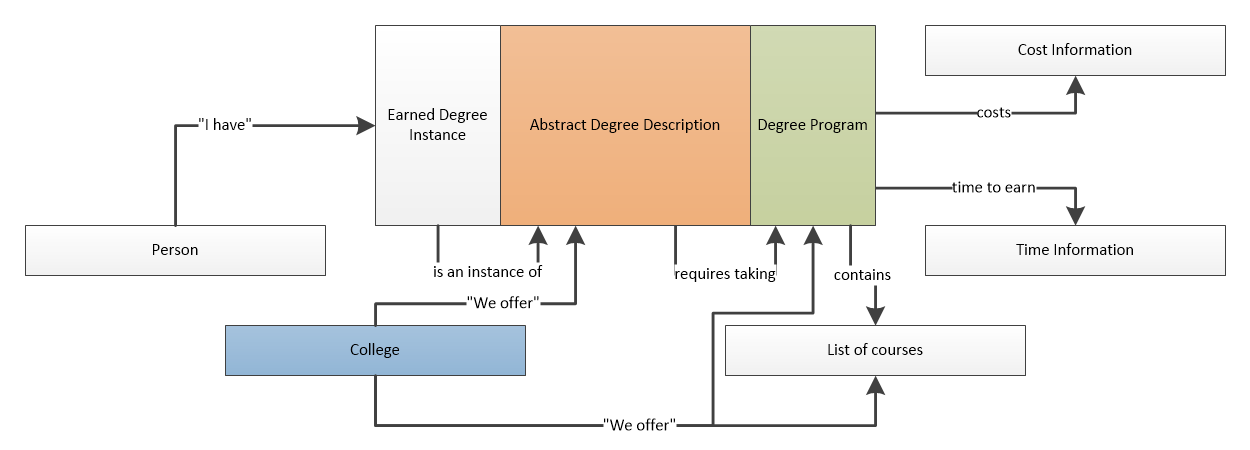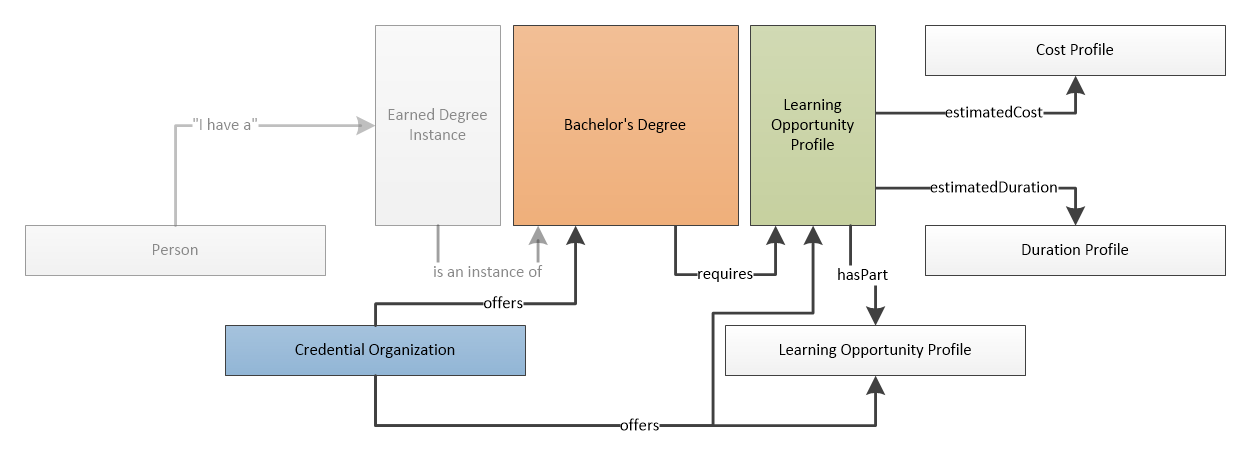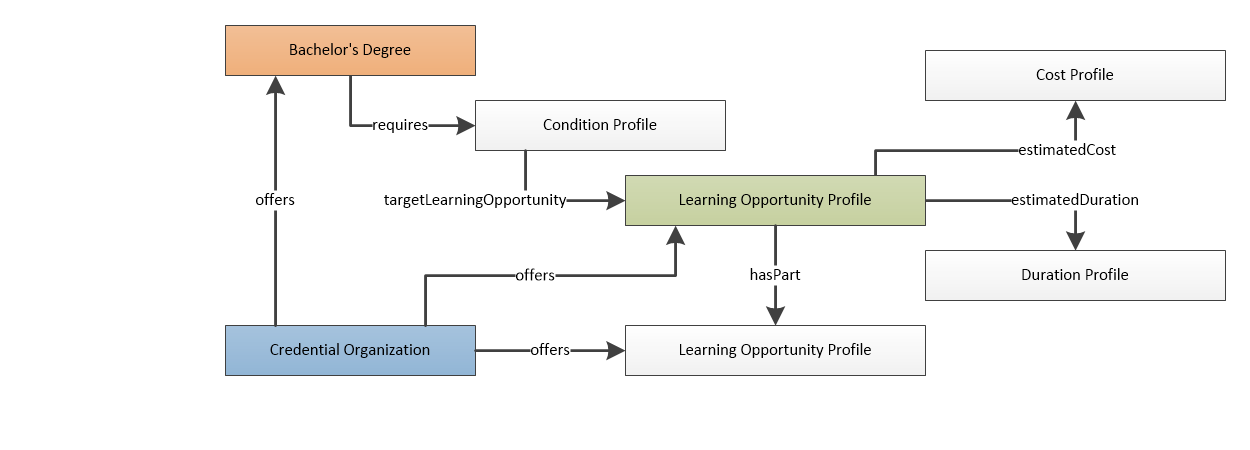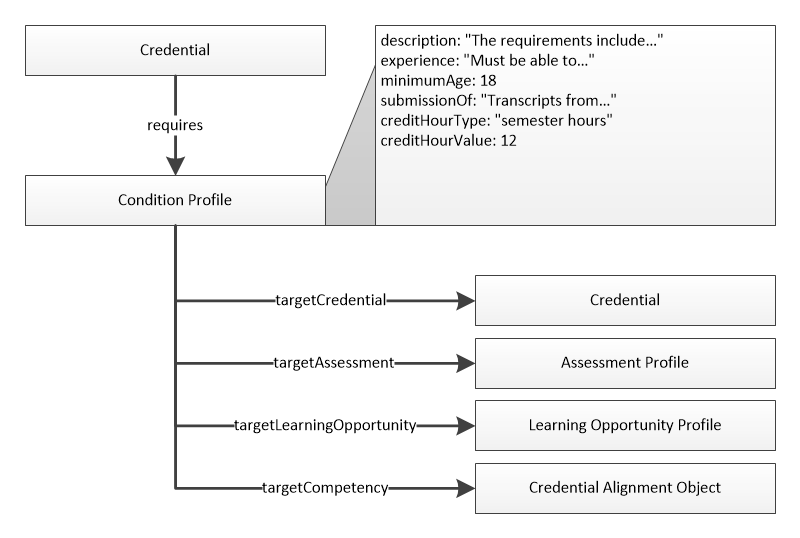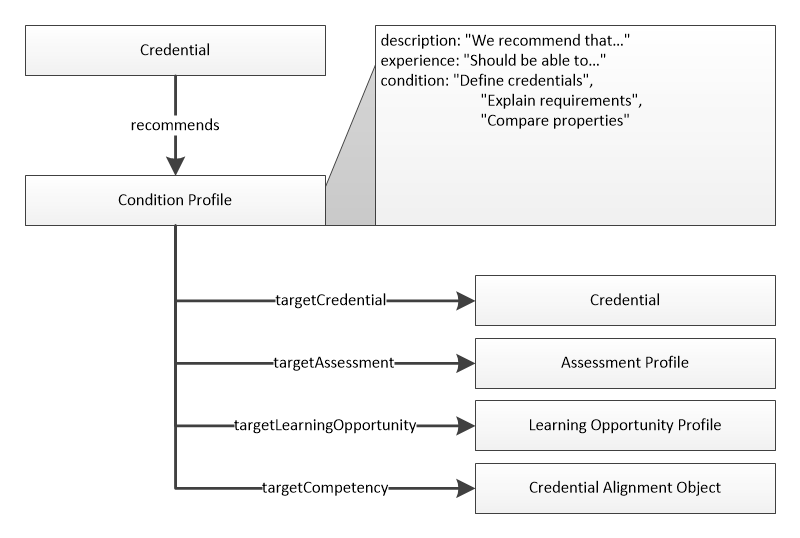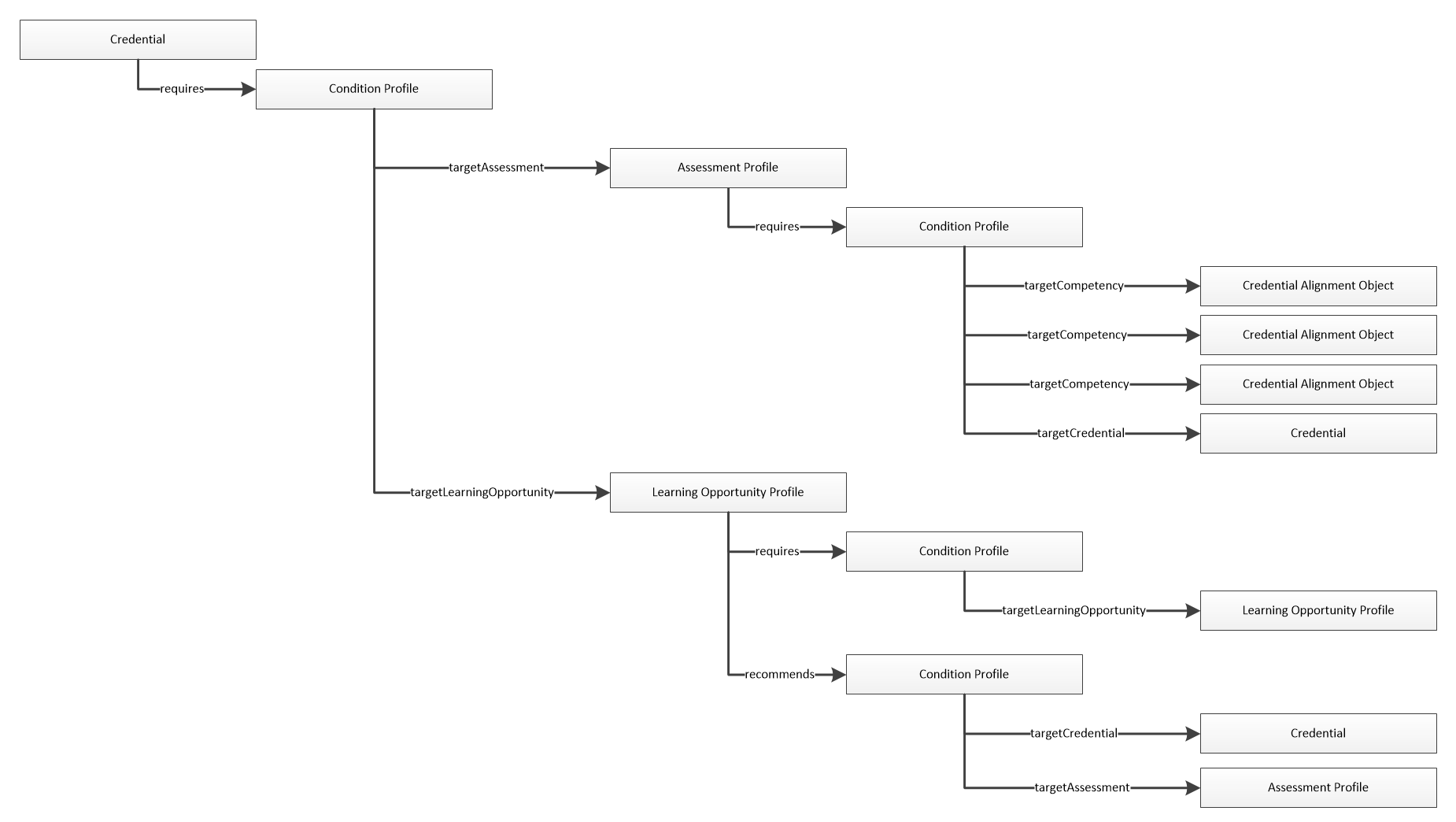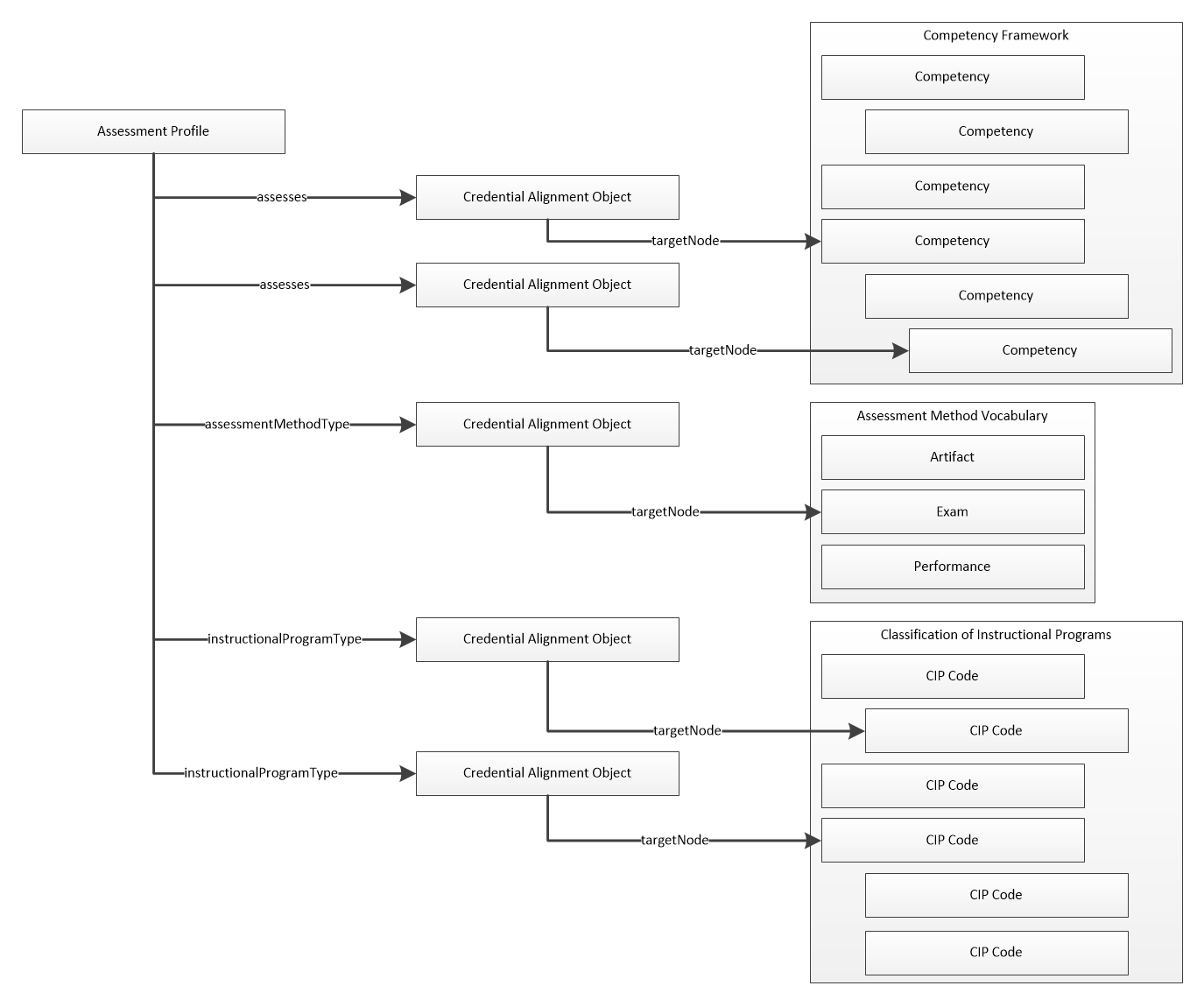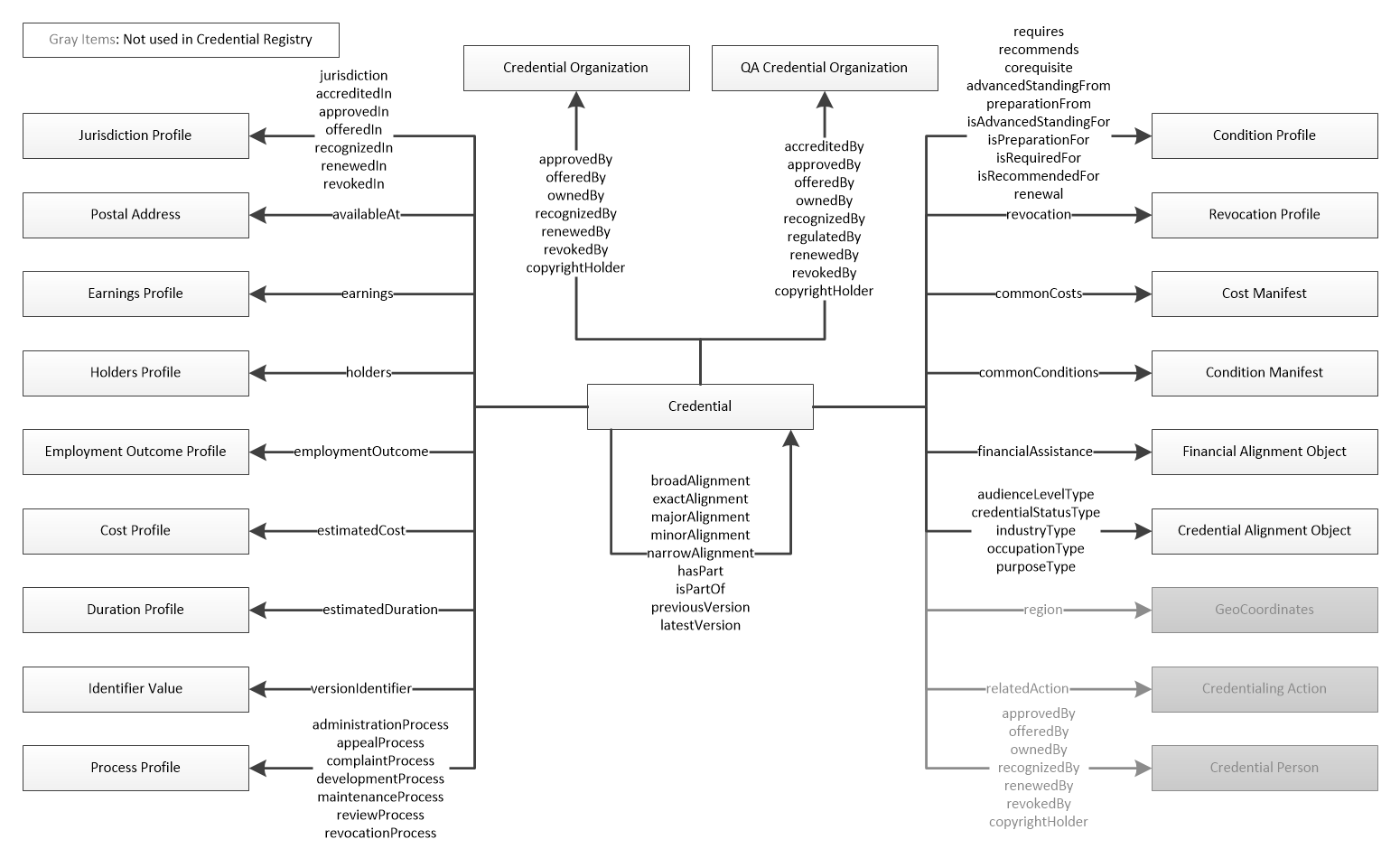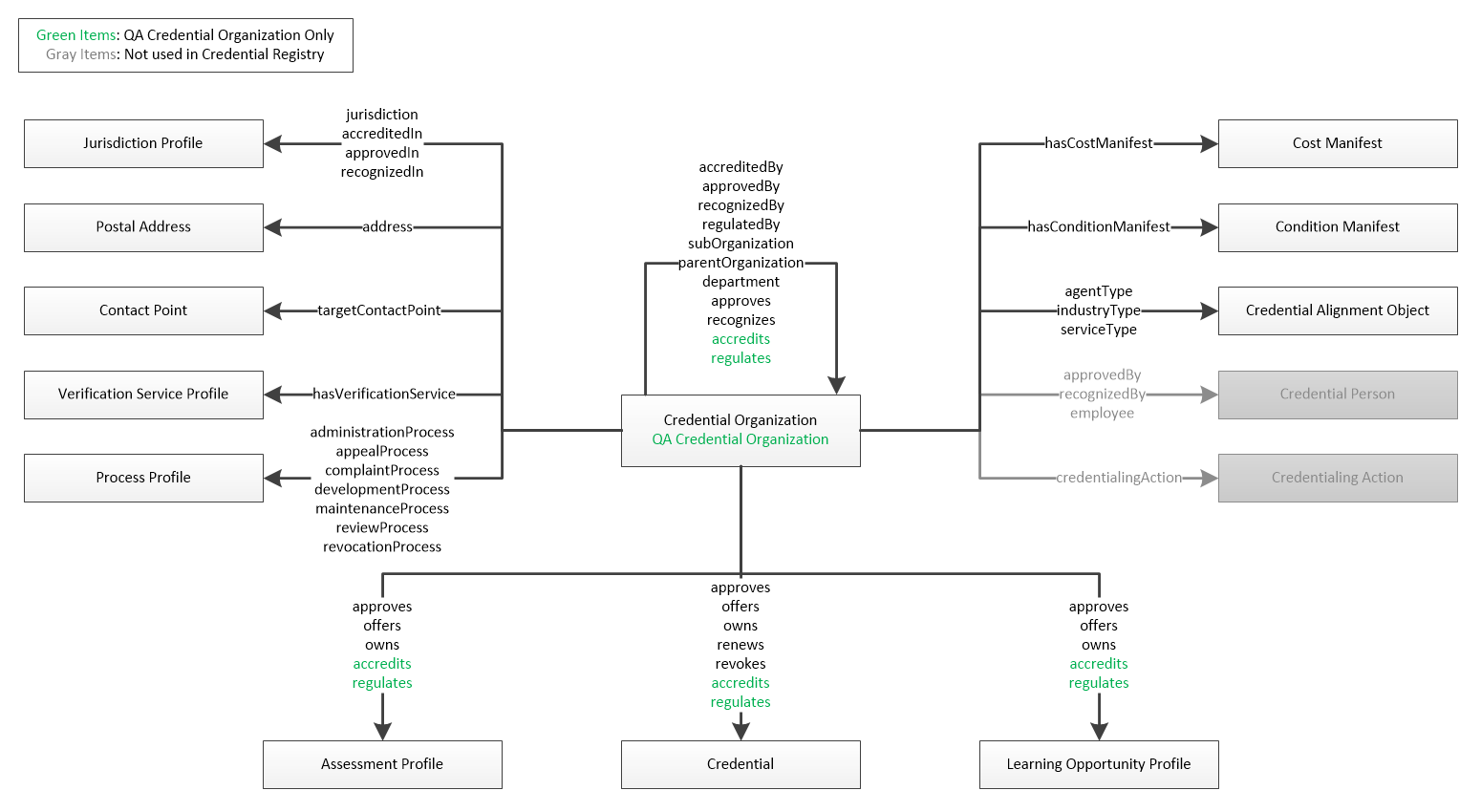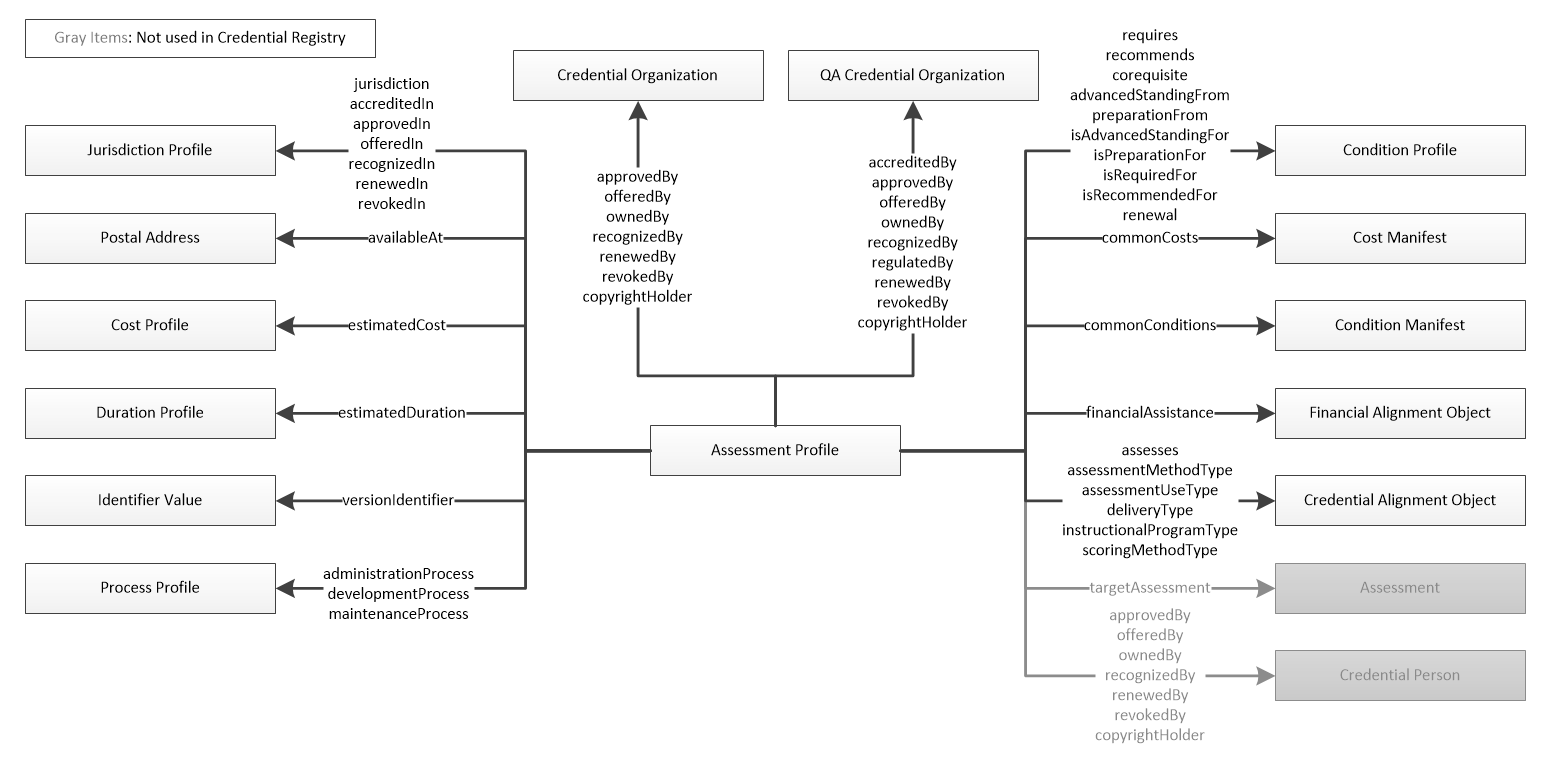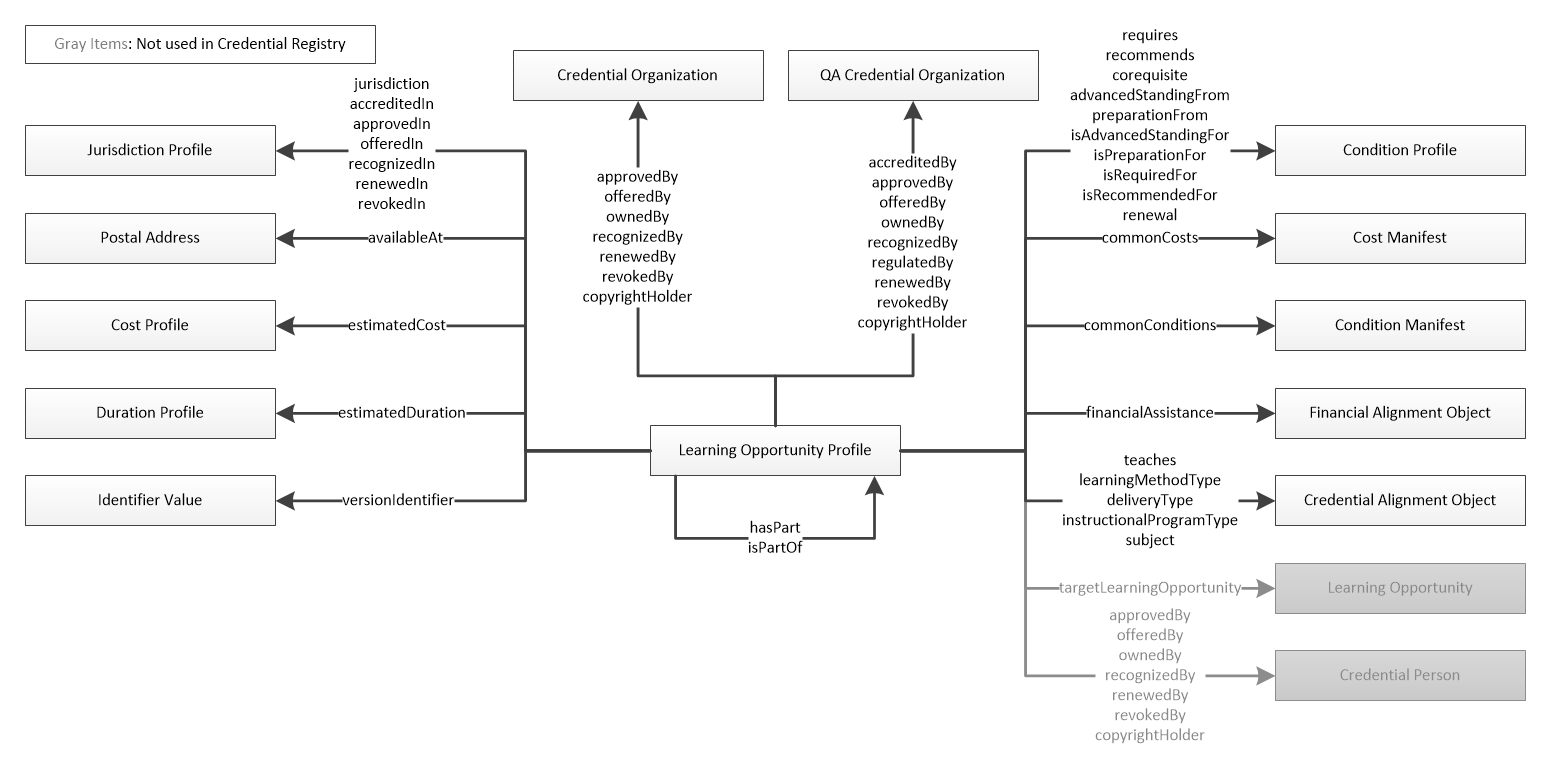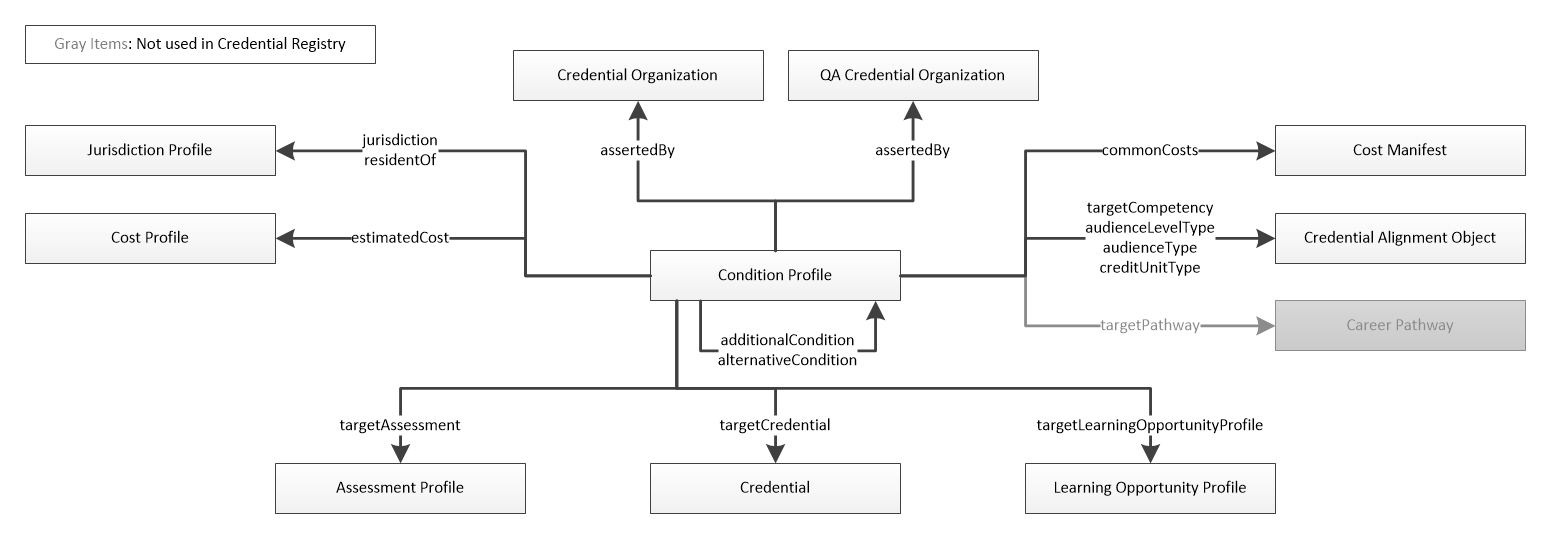CTDL Basics
Seeing Credentials From a CTDL Perspective
When you think about a "credential", it's common to think of a singular entity that is offered by and maintained by an organization, bears a set of requirements and conditions to earn, and which is earned and used by a person. For example, consider a Bachelor's Degree:
When examined more deeply, the notion of a "Bachelor's Degree" can be divided into key parts:
- The earned degree. This is what a person takes home and uses to prove their competencies. It is often represented by a diploma and verified by transcripts and other services offered by the college from which it was earned.
- The abstract degree. This is the description you would find on the college's website. It encompasses all information that is directly related to the credential itself, such as the subjects it covers and the competencies it represents.
- The degree program. This is the set of courses one would attend and successfully complete in order to earn the credential. It contains information relating to the individual courses, locations, times, durations, and requirements for completing each.
Notice the impact of this division:
This is how credentials of all types (not just degrees) are conceptualized in CTDL. Note that the degree program could just as easily be one or more assessments required to earn a certification, or a combination of requirements. The key is that the credential is separate and distinct from all of the things one must do to earn the credential.
Furthermore, CTDL does not seek to define the earned instance of the credential, nor does it seek to define the properties of the individual who earns it. CTDL is intended to describe the abstract credential, as well as the requirements to earn it.
If we swap out the labels on our diagram for the terms used in CTDL, it looks like this:
Note that both the Degree Program and the courses that support it are each considered to be a "Learning Opportunity Profile". This is an entity that is designed to describe any sort of educational or training experience, whether it is a full degree program spanning months or years, or a single day class lasting just a few hours.
If we remove the earned instance of the credential and rework our graph to reflect CTDL classes, properties, and structure, it looks a little different:
Note the addition of the Condition Profile - we will cover this entity below.
Understanding Condition Profile
In CTDL, there are many ways in which entities relate to one another. For example:
- A credential requires an assessment
- A learning opportunity is preparation for an assessment
- An assessment recommends taking another assessment first, and requires having a certain set of competencies
- A credential requires some combination of assessments, learning opportunities, and other credentials
- A credential requires an assessment which in turn requires a learning opportunity which in turn recommends having another credential
Not only are entities related to one another, but those relationships may contain additional constraints, such as:
- A credential may require someone to take one assessment in one state, and a different assessment in another state
- An assessment may require taking a learning opportunity, being 18 years old, and having some work experience in a particular field
- A learning opportunity may require two other learning opportunities and additionally require one of three other learning opportunities, or a combination of assessment and experience, but only in a certain city
- A credential may have one set of requirements for veterans and one set for everyone else, with some overlap between them
There are myriad ways in which entities may relate to one another depending on certain conditions. These are most often conditions that define requirements, but may define other relationships as well. CTDL attempts to capture these conditions with a large and flexible entity called Condition Profile. Condition Profile serves as a go-between that allows detailed descriptions of the relationships between entities that would not be possible to capture with direct relationship properties alone:
Condition Profile is also useful for defining other relationships using the same basic structure:
Using Condition Profile, a graph can be constructed that describes relationships that are very simple or very complex:
Understanding Credential Alignment Object
Relationships between objects are a key element of both CTDL and the Credential Engine Registry. It is often the case that you can better describe something by referencing something else. For example:
- A credential requires one or more competencies in an external competency framework.
- An assessment can be categorized as being "online" or "in-person".
- A learning opportunity can be related directly to a code under the Classification of Instructional Programs
In the best-case scenario, this information exists online in a way that can be directly referenced with enough granularity to adequately define the assertion being made. Occasionally, however, this information may need to be recorded directly in the data. Sometimes it is more convenient to do both. To cover all of these use cases, CTDL makes use of a special utility class called a Credential Alignment Object. This class is based on the Alignment Object in schema.org and serves as a combination of a descriptive object and a linking object, with the capability to describe an alignment when necessary.
Credential Alignment Object enables linking to data in a variety of structures:


